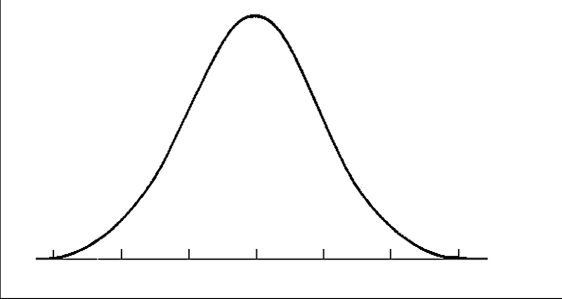Is the ACT curved? Yes, but not the same way that a test in your geometry or history class might be. It works like this...
The ACT "curve" is designed to correct for minor fluctuations in the difficulty of the test. In essence, when an exam contains a few more difficult questions, students can actually miss a few more problems to achieve a certain score. Likewise, when an exam contains a few more easy questions, students need to answer more of them correctly to achieve the same score. In this way, there is no advantage to taking a test with easier questions (again, you'd have to answer more of them correctly), and no disadvantage to taking a test with harder questions (because you'd be able to miss a few questions).
Before we look at an example, let's define some terms. A "scaled score" is the one you're most likely familiar with. It's the score for each section that ranges from 1-36.
The scaled score is derived from your "raw score", which is the number of questions answered correctly.
Example: suppose that on the ACT math section, you answer 31 questions correctly out of the 60 total. With a raw score of 31, you might receive any one of three different scaled scores: 19, 20, or 21. The scaled score you receive would be determined by how difficult the exam was.
For instance, on the April administration of the ACT, you would have received a math score of 19 because the test was a little easier than average.
On the June ACT, you would have received a 20 because the June test was close to average.
On the December ACT, you would have received a 21 because the December test was harder than average.
Another way to look at it: in order to score a 20 in math, you would need a raw score of 31 on the easier test (April), 30 on the average test (June), and only 29 on the harder test (December).
Please note that the months used in the above example were picked at random. The difficulty of any month's exam is not released to the public ahead of time. A common myth about the ACT curve is that the average test taker should avoid a particular test month if a large group of strong students will be taking the ACT that month, and instead take the test when a large group of weaker students will take the test. The (mistaken) assumption here is that the curve will push down the average student's score in the first situation (large group of strong students) and pull it up in the second situation (large group of weak students). The reality is that the curve is set before the exam is administered because it is based on the difficulty of the questions, not the quality of students taking the test. So even if in a particular month, a large group of strong students all earned perfect 36s, your score would be the same as it would have been if they not taken the test at all. In the same way, a large group of weaker students taking the test will not affect your score.
Bottom line: Take the ACT when it best suits your schedule and you have ample time to concentrate on your preparation for the exam. Don't worry about other students. Their scores will not affect your scores or vice versa. Instead, focus on yourself and what you need to do to reach your scoring potential.
At Test Prep Gurus we teach students how to raise their ACT and SAT scores so they can reach their goals for college and beyond.
It all starts with 3 steps:
Complete mock ACT and SAT exams.
Schedule a free 15-minute consultation to review your exam results.
Create a 1-on-1 test prep plan to reach your goals for college and beyond.

